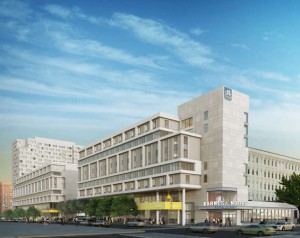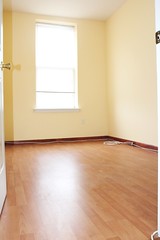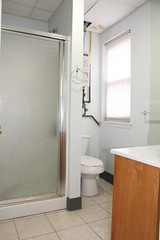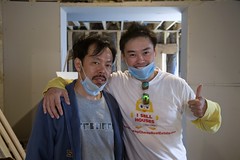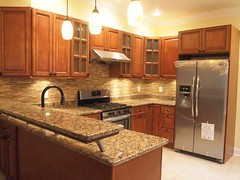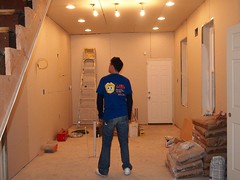Drexel Plans New $97 Million Housing/Retail Project
Posted on Feb 20 in Philly Newsby adminPrint

Article From: articles.philly.com
By: Susan Snyder
Drexel University, in partnership with a Texas-based developer, has launched a $97 million student-housing and retail-development plan along Chestnut Street.
Set between 32d and 33d Streets, the 19-story tower and two eight-story townhouse-style buildings will offer housing for 869 students and 11 storefronts, including an anchor restaurant and a retail store yet to be named.
The design is meant to enhance student life by making the neighborhood increasingly pedestrian-friendly and urban, school officials said.
The location is key: It’s where the campuses of Drexel and the University of Pennsylvania touch, a prime gateway.
Construction is to begin this month, with completion scheduled in September 2013.
It is the first of three such projects the university envisions over the next five years under president John A. Fry’s plan to eventually double student-housing capacity on the West Philadelphia campus.
Fry, who had a leadership role in Penn’s successful neighborhood revitalization more than a decade ago, promised to increase student housing and improve Drexel’s gateway to Center City when he was named president in 2010.
With the release of the school’s updated master plan in December and details of the retail and housing projects this week, Fry appears headed for a similar push at Drexel.
“Of course the caveat is, if we can afford it, if this can be done in a way that doesn’t create any financial strain on the university,” Fry said in an interview. “Each of these projects will get fully vetted by our board.”
The three projects are expected to add at least 3,000 beds to the campus, which currently has housing for 4,250. The school’s master plan calls for adding a total of 4,400 beds.
Drexel has been struggling with increased demand for housing, and this year “tripled” two of its buildings, meaning it put three students in rooms designed for only two.
The housing/retail projects are part of an $800 million building splurge planned for the campus over six years, $300 million of which is under way. Included are a new building for the business college and an urban center for the College of Media Arts and Design, said Robert Francis, vice president for university facilities.
An estimated $300 million of the $800 million is coming out of Drexel’s coffers in a mix of borrowing and operational funding.
Drexel officials hope the rest of the work will be paid for by others.
That’s the case with the Chestnut Street project. The university is leasing the land to a developer, American Campus Communities, which will fund and operate the buildings, adhering to university guidelines on supervision, programming, and student life, Francis said.
The developer will pay the university a six-figure lease payment each year, he said.
“This is a revenue-positive development for the campus,” Francis said.
Developers also will be sought for the other projects, he said, with the same model of retail space at the ground level and housing in the upper levels.
“We will look to do as many deals with the private sector as possible,” Fry said. “I can’t guarantee that’s the case. The trajectory is dependent on the private developers.”
Drexel had been in the midst of a building boom before Fry’s arrival. Until 2007, the university had only been building one new structure a year, said Francis. In 2008, it started with its law school expansion, integrated science building, recreation center, and other projects.
“The rate at least tripled,” Francis said.
The Chestnut Street project was in the master plan of 2007 but included only the development of retail space, he said.
When Fry arrived, he decided to augment that plan with student housing after hearing from neighborhood leaders about the stress an increased student presence was putting on neighborhoods, primarily Powelton Village but also Mantua.
“You can’t blame the neighborhoods at all. Honestly, we created the condition inadvertently by growing the enrollment and not having adequate housing on campus,” Fry said.
He’s also concerned about the poor quality of some off-campus housing.
“It’s important for students to have a high-quality residence where they can congregate, be it academically or socially,” Fry said. “It sort of rounds out the whole academic experience.”
The university enrolls about 26,000 students, including undergraduate and graduate students and those in the law and medical schools and in co-op programs. Francis estimates that about 23,000 of those students live in the area so they can attend class on campus.
The 12-story LeBow Building and the urban center were in the previous master plan but were started by Fry. LeBow is scheduled for completion in 2013 and the urban center in September.
Fry is known for his leadership on development.
From 1995 to 2002, he served as executive vice president and chief operating officer of Penn under president Judith Rodin. He led that school’s neighborhood development.
Later, as president of Franklin and Marshall, a small liberal arts college in Lancaster, Fry used many of the same strategies, targeting an industrial site for reclamation and development.
The Chestnut Street project on the first two floors will include a mix of stores, such as restaurants, banks, an electronics shop and perhaps a clothing store, and a new corner entry into the nearby Barnes & Noble bookstore. On the upper floors, student housing will offer a variety of bedroom options and configurations. There also will be a social lounge with gaming area, a fitness center, meeting space, a theater, and a laundry room.
The second housing project, targeted for completion in 2015, is planned for 34th Street and Lancaster Avenue, Francis said. A third is planned for near 30th Street Station, possibly opening by 2017.
The university also plans to add more green space, lighting, and plantings, Fry said.
“What you’re going to see is not only more building but more green,” Fry said. “We’re going to figure out a way to make the campus as hospitable as possible and a more attractive and competitive institution.”
